Japanese tattoos, or irezumi 刺青, look cool. They're bold. They're colorful. They're the source of a lot of misunderstanding.
"Only yakuza have irezumi."
"People with irezumi can't visit onsen."
- 刺青(いれずみ)
- Japanese Tattoo
But misunderstandings may be the smallest issue facing Japanese tattoos.
This centuries-old cultural art form is in danger of being stamped out by Japanese authorities. If we don't start recognizing its importance, irezumi practice in Japan may be significantly diminished.
Thankfully, Brian Ashcraft and Hori Benny's new book, Japanese Tattoos, was written to clear up confusion, ignite interest, and hopefully save irezumi from extinction.
Through interviews, information, and a few hundred images, you'll gain an appreciation for Japanese tattoo art. Who knows? By the end, you may be inspired to travel to Japan and get some ink of your own.
Japanese Tattoos Content
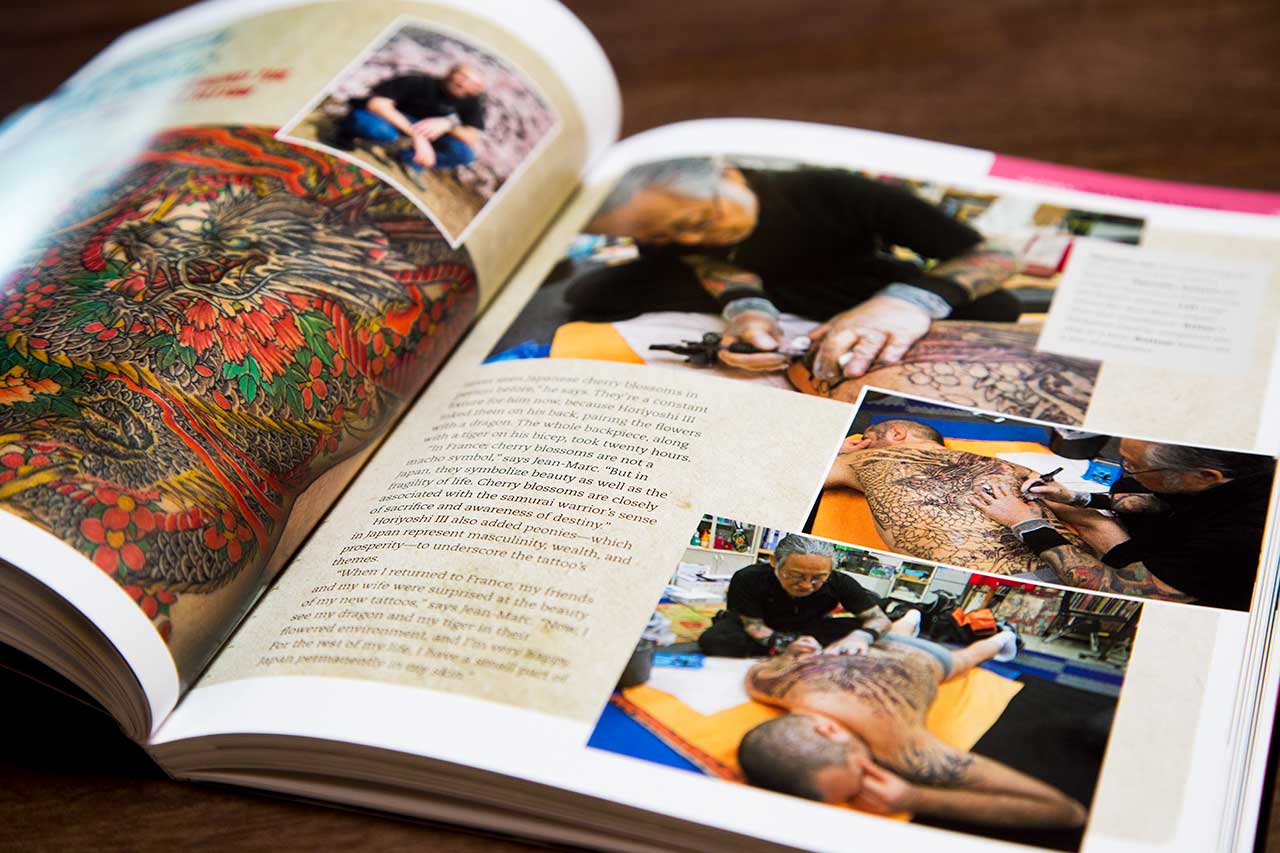
There aren't many books about irezumi out there in English. For a dense, scholarly examination of the art form, there's The Japanese Tattoo by Donald Richie. It offers heavy analysis from a legendary Japanologist, but has few images and is too dense for newcomers to the art form.
Others, like The Japanese Tattoo (yes, it has the same name as Richie's book) by Sandi Fellman, and Bushido: Legacies of Japanese Tattoos by Takahiro and Katie Kitamura, are amazing picture books. But they give shallow information at best, or are patronizing and insulting to Japanese culture at worst.
Ashcraft and Benny's book offers stellar research and captivating imagery that's fun and breezy enough for irezumi beginners.
To give you a better idea of the content, let's break down each chapter piece-by-piece and see how it flows and builds on itself.
Introduction: Exploring Japan's Tattoo Tradition
The opening of Japanese Tattoos is pure informational dynamite. It's clear from the first paragraph, this is more than a tattoo picture book.
Irezumi history is woven throughout the text, and it all starts here. Ashcraft and Benny make sure we understand the importance of this art form from the get-go. That way, we're appreciating every image as we progress, rather than just scanning pretty pictures.
This isn't some history fluff thrown in for its own sake. It's well researched and well told, scaffolding and giving progression to the imagery. Ashcraft's style isn't dry or academic and the history is presented as something living and active; something that's affecting the world today.
If I had to pick a favorite section, it would be this one (because I love history). It hooked me at the start and got me hungry for more.
1. Kanji Tattoos
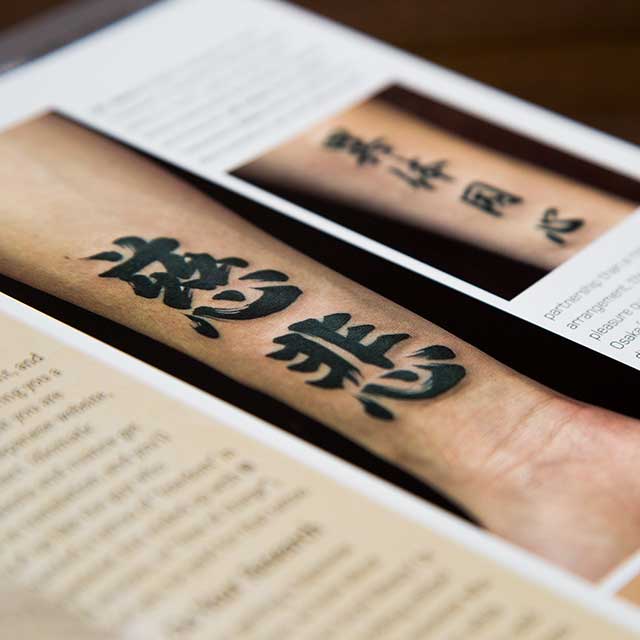
The focus of each chapter is on different types of Japanese tattoo themes and their significance to the wearer. With the first chapter, Ashcraft and Benny begin moving away from history (which they return to later) and toward tattoo motifs.
The first motif covered is kanji. They were the earliest forms of irezumi and the simplest in terms of design. The authors' attitude toward kanji tattoos for foreigners is particularly interesting. They don't outright denounce them as most people do. Instead, they point out common missteps and offer kanji that make sense. They even offer explanation on the Japanese writing system, a list of meaningful Japanese phrases, and ways to check your kanji before you ink them. It's clear they're trying to help the reader make good decisions rather than chastise them.
2. Nature Tattoos
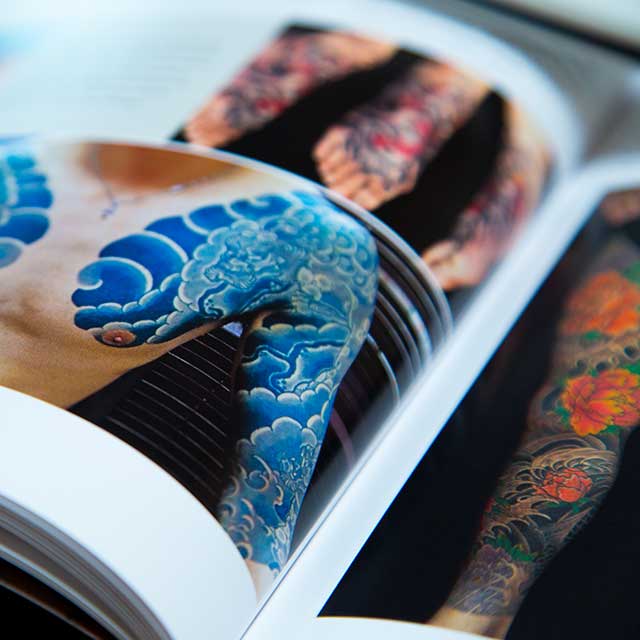
In chapter two, we get more colorful and symbolic tattoo designs, all based in nature. Flowers, trees, water, fire, you name it, they've got it in tattoo form. And each nature motif is followed by extensive background information, explaining its meaning in Japanese culture. A lotus isn't just a flower that grows in water, it's a symbol of purity. Peonies symbolize rebirth. And chrysanthemums represent the Imperial family and the Emperor.
This is where Japanese Tattoos moves into the pattern it follows to the end of the book: a parade of Japanese cultural motifs commonly used in tattoos.
Each one is given context and a thorough explanation. This stretches the writing beyond the borders of "tattoo book" and into something else. I'd almost call it "A Primer on Japanese Culture featuring Pictures of Tattoos." And that's a good thing.
3. Creatures Living and Mythical
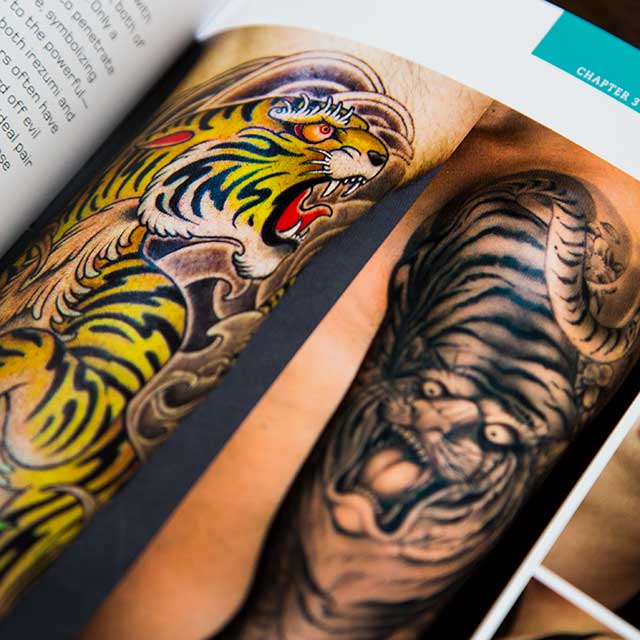
Jumping from nature to animals is a logical chapter transition. And while we're talking about animals, why not rope in some mythical beasts too?
These creatures' backgrounds are fascinating, to say the least. We've all seen tigers, fish, and foxes before, so it's easy to assume we already know what their stories will be. But did you know carp symbolize strength and determination? Did you know tigers + bamboo = shelter for the powerful? I didn't. In-depth details like these are what make the book compelling.
4. Gods and Guardians, Heroes and Demons
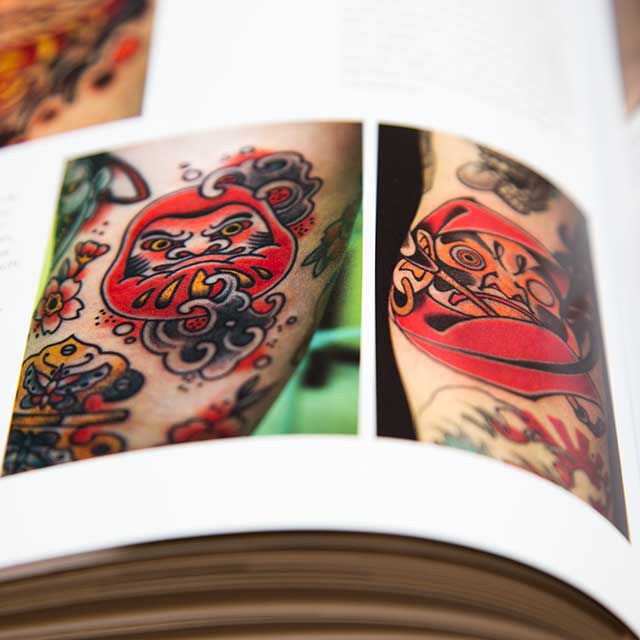
This chapter has the stuff most people are interested in (Did somebody say "yokai?"). There are a ton of gods, heroes, and demons to learn about, all with detailed background information. Even if you feel well-versed in Japanese history and folklore, you'll still probably learn something new.
Some of these characters can seem similar at first glance (there are a lot of tough dudes with swords). So having an expert explanation helps keep them separated.
5. The Full Bodysuit
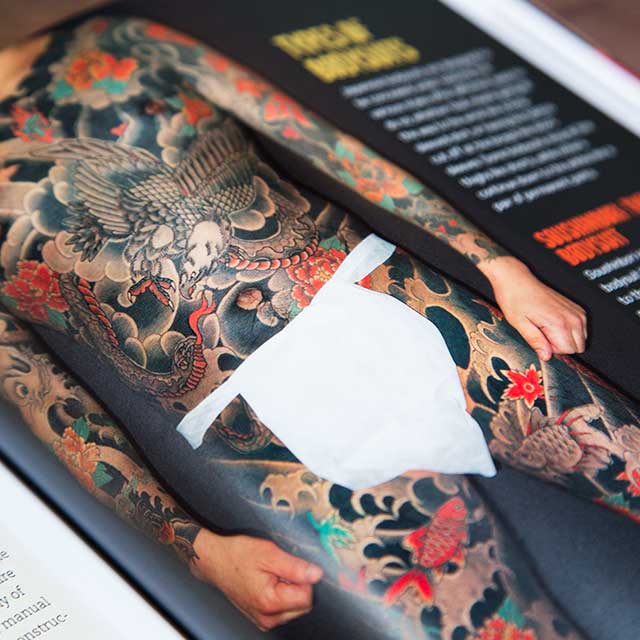
Rather than cultural themes that go into the art, this chapter focuses on the form the art can take. This is the culmination of the book. Ashcraft and Benny take all the built up historical and cultural understanding and use it to present the most common form of irezumi: the bodysuit.
The bodysuit separates irezumi from Western one point styles, so the Japanese tattoo history lesson is back in full force. And instead of talking about motifs, the authors lay out every kind of bodysuit there is. You've probably heard of tattoo sleeves. But what about split chest? Tortoise shell? The five-tenth or seven-tenth? They even go as far as to detail the different types of edges (mikiri 見切り) used in irezumi bodysuits.
6. Contemporary Designs and Geek Tattoos
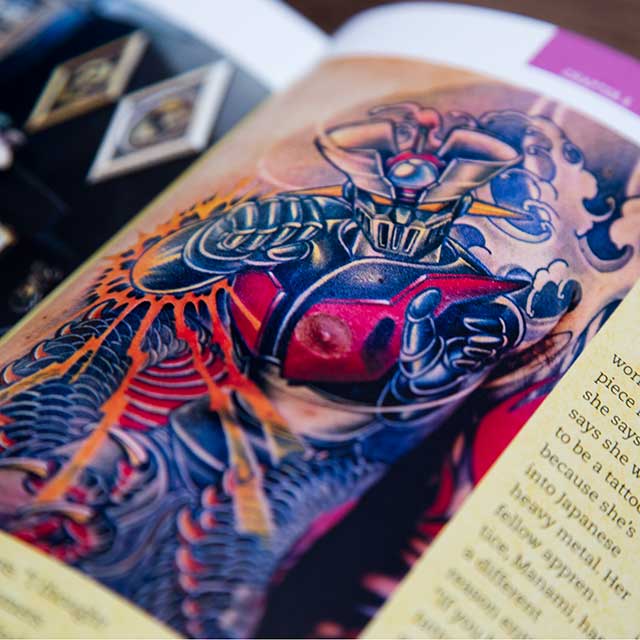
The final section acts as an afterword, a kind of "where are Japanese tattoos going?" examination. We get a taste of the "non-traditional" Japanese tattoos inspired by pop art and pop culture. So if you like the motifs in chapters 1 through 5, but want something more modern, you may find some good ideas here.
This section isn't only for otaku (though most of the designs will make nerds smile). Many tattoo designs in this final chapter are modern takes on some of the classic motifs found throughout the rest of the book.
If this section came anywhere else, it may have seemed out of place, but here at the end it complements the rest of the book, like a tasty tattoo dessert.
Sub-sections
Within each chapter are sub-sections that break away from the action and provide extra information. They fall into three categories:
-
Tattooist Profiles: Mini biographies of different Japanese tattoo artists. These were some of my favorite parts of the book. I love hearing life stories, especially ones where the protagonist is successful against all odds. And since irezumi is still considered "taboo" by Japanese society, these stories have a cool "underdog" quality to them.
-
Customer Profiles: These are like mini-advertisements for irezumi. It's a, "these people did it and you can too," kind of message. Some are Japanese people who defied cultural norms to express themselves. Some are foreigners who traveled hundreds of miles to have irezumi masters ink their skin. It's all gripping, because you see how each person came to their decision. Seeing someone else's journey and thought process can inspire you to follow in their footsteps.
-
Breakout Boxes: Scattered around are boxes of cultural and practical information. Most are extra context that doesn't fit into the main flow of the chapter. But a precious few are helpful bits of advice for picking the right tattoo and how to avoid common irezumi mistakes (hint: if your Japanese dragon has five claws, it's not really a Japanese dragon).
Japanese Tattoos Physical Features
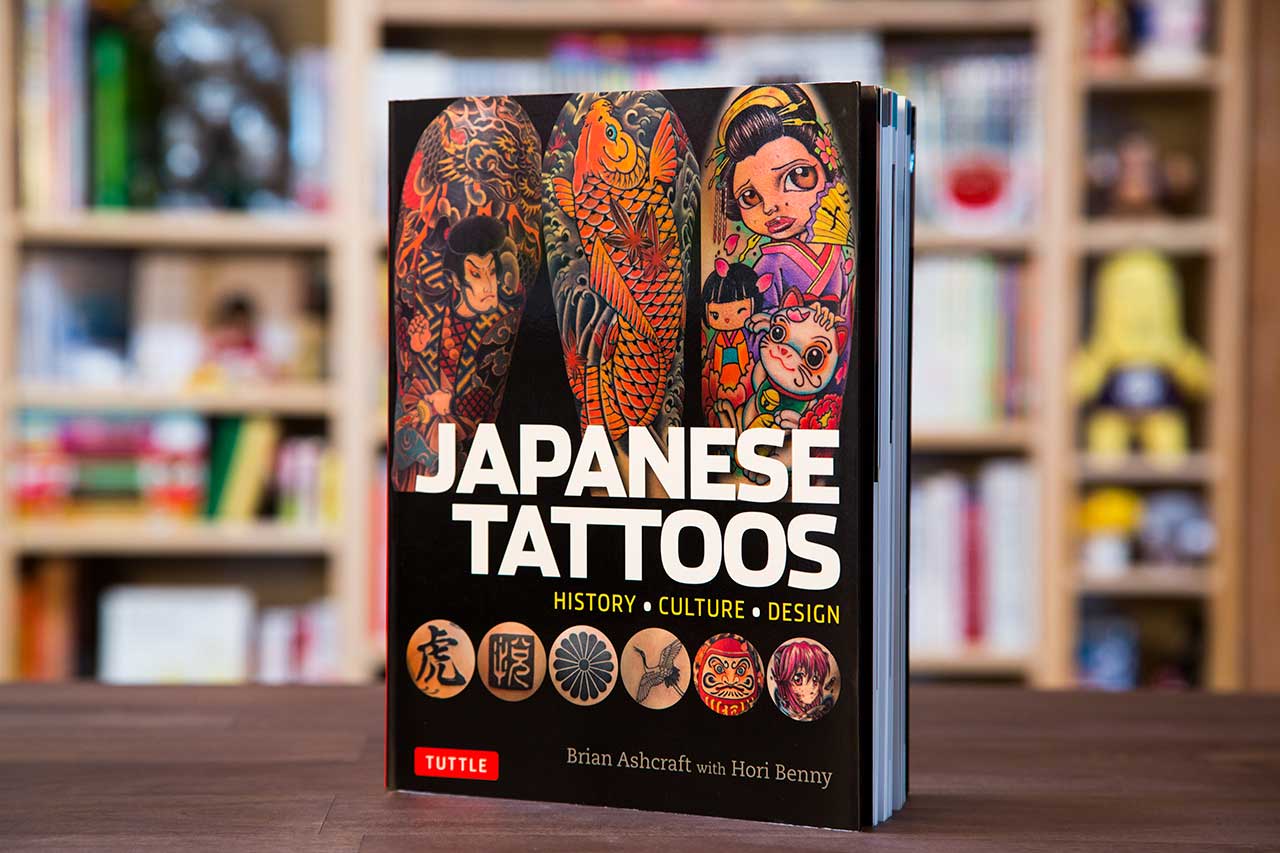
As soon as you pick up the book, you'll notice its glossy cover. It feels clean and smooth. This book won't be sliding out of your hands accidentally. It's weighty for a paperback, thanks to the nice, thick paper.
Ashcraft and Benny make sure we understand the importance of this art form from the get-go. That way, we're appreciating every image as we progress, rather than just scanning pretty pictures.
The cover design is busy up top, and clean and modern down below. The title's block text is bold and pronounced, letting you know what's up before your eyes even register there are tattoos above it. The six bubbles below the title are a nice touch. They're a great way to showcase a variety of tattoos without making the design too busy. Overall, a fine design, but personally I'd rather see one example of awesome irezumi than snippets of different tattoos hodge-podged together.
The book doesn't have a dust jacket, but it's made to look like it does. There are foldable flaps on the inside of the back and front covers that mimic the feel of a dust jacket. But in reality, they're just folded extensions of the cover itself. The Tuttle Publishing website calls it a "paperback with flaps."
The paper inside is glossy, but less than the cover. This makes it easy to turn the pages. The spine behaves itself. It stays open easily when open to a center page.
The font choice fits the tone and target audience. The majority are nice, clean serifs and sans serifs. But for certain headers, a stylized "battle damaged" font is used. I found this stylistic choice distracting initially, but I understand why it was chosen.
What Makes Japanese Tattoos Good?
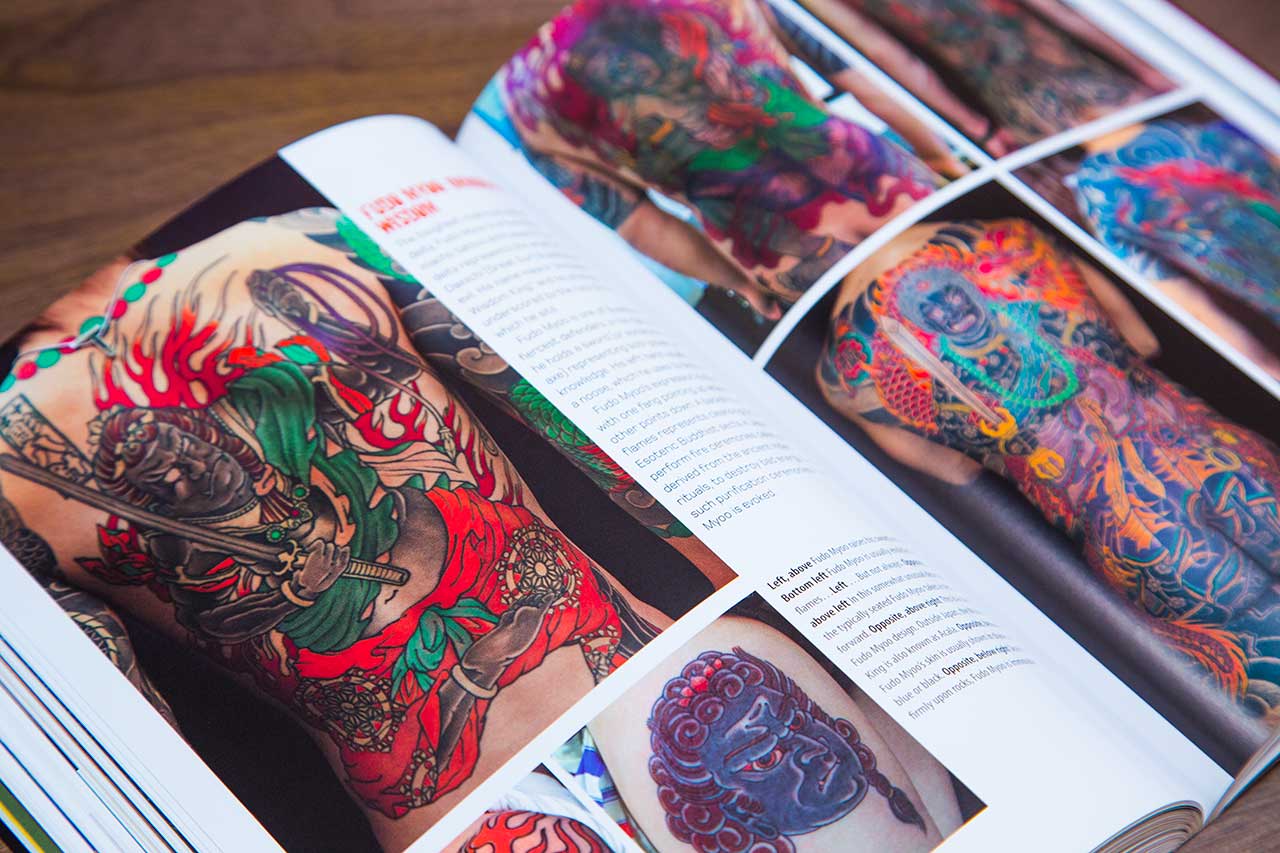
Early chapters are heavy on irezumi history and slowly introduce tattoo themes. By the middle, it becomes almost exclusively about the motifs. But in the end, Ashcraft and Benny bring us full circle, re-introducing the history element. Each chapter builds on the next, giving a nice even flow to the information.
The depth of research in Japanese Tattoos is a major strength. There's such attention to detail given to each cultural theme, and the history of irezumi is explained very thoroughly. By the end you'll have all your burning questions about Japanese tattoo culture answered. And more importantly, you'll learn the meaning behind Japanese tattoos, so you'll come away smarter and better able to make tattoo decisions.
Japanese Tattoos is a breeze to read. Ashcraft's style was born on the internet. So even though the information is deep and scholarly, it's very accessible. It's like having a friend, who is also an irezumi expert, write a book just for you.
The photos are the star and the content separates this book from the pack. But let's be honest, most people won't reach for a book on Japanese tattoos with no pictures. We want to see all that awesome irezumi art! And Japanese Tattoos is jam-packed.
The quality of the photos is top notch, though styles vary. The pictures were taken by Ashcraft, Benny, and a multitude of tattooists from across Japan. So quality is consistent, but the difference in photographic style can stand out on some pages.
Pictures of bodysuits means the pictures of bodies. But none of it ever feels pornographic. If you do a Google image search for irezumi, many of the results are pictures that focus on the peoples' bodies rather than their tattoos. Japanese Tattoos keeps the focus on the irezumi. Bodies are presented as canvases. I never felt like the book was exploiting nudity to get attention.
Japanese Tattoos is a breeze to read. Ashcraft's style was born on the internet. So even though the information is deep and scholarly, it's very accessible. It's like having a friend who is also an irezumi expert.
But the thing that impresses me most about Ashcraft's writing is his level head. He's serving up a wild and wonderful side of Japan. He could easily color the country as "mystical" or "weird" for his own benefit. People eat those Japanese buzzwords up. But instead he gives us the wild and wonderful in context.
For example, he says on page 10,
There are no truly traditional Japanese tattoos because people don't live in a traditional world.
Rather than take the opportunity to exploit generalizations about Japan, he steers us in a direction of truer appreciation.
Who Is This Book For?
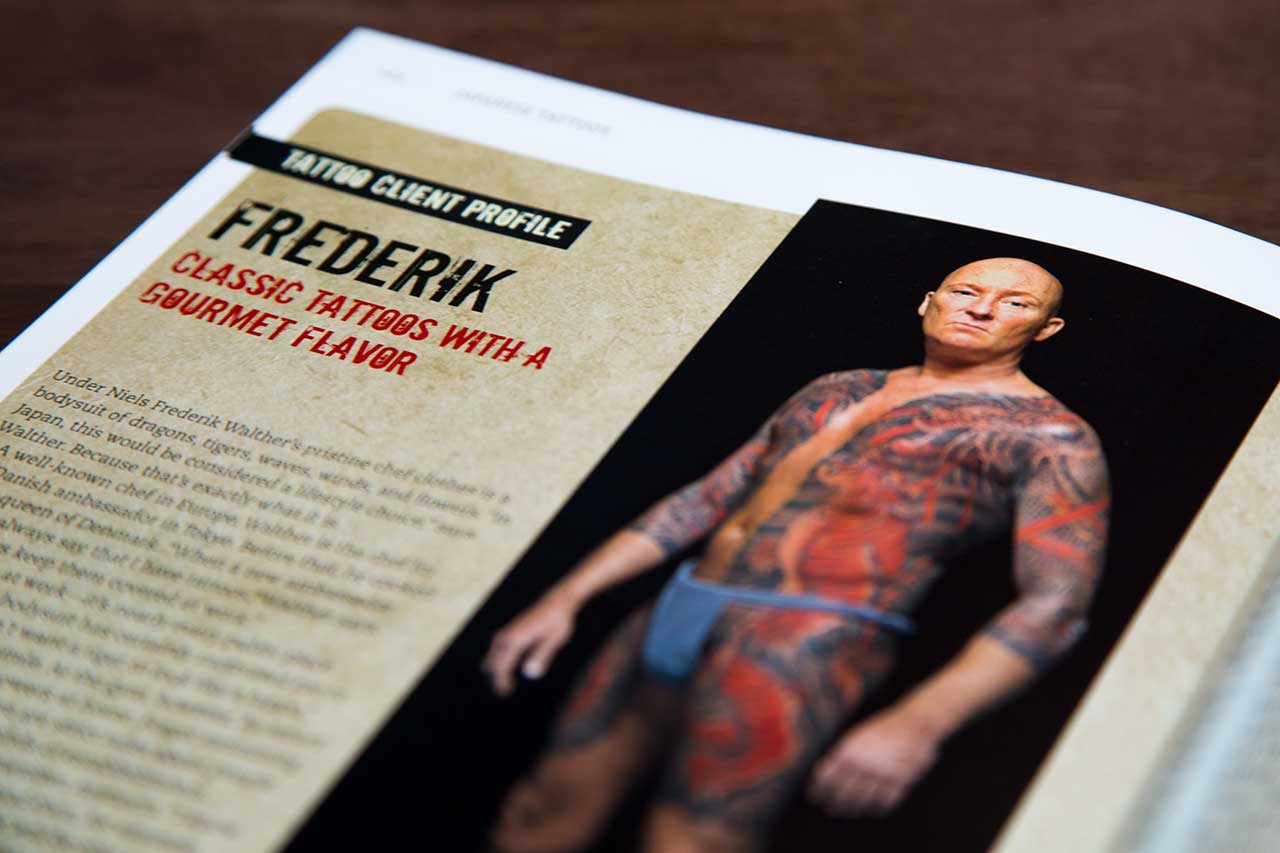
The movement from history to motif may feel like Japanese Tattoos is losing focus, but it's right on track when you consider the target audience. It's meant for people outside of Japan who are interested in getting irezumi for themselves. It offers cool pictures for inspirations and informs decisions with the significance of each symbol. In the end, readers will appreciate irezumi more, or take the plunge to get a Japanese tattoo themselves.
In the end, readers will appreciate irezumi more, or take the plunge to get a Japanese tattoo themselves.
This is where all the motif explanations make sense. If you want irezumi ink, you should be informed. And Japanese Tattoos can act as a reference for people making that decision. You'll find a lot of tattoo ideas here. But the information will help you do more than just pick a cool design. You'll be able to choose something that has meaning. And if all those tattoo reality TV shows have taught me anything, it's that every tattoo needs a backstory.
Of course, the book isn't only for people who want to take the irezumi plunge. But it's clear Ashcraft and Benny want those inspired by their book to get their tattoos done right. They even offer tips for finding a good tattoo artist in Japan (and how to avoid the bad ones).
Even if you're not "into tattoos," I would still recommend Japanese Tattoos. If you're interested in Japanese culture, the irezumi themselves are culturally significant, but moreover the motifs presented are a great cultural crash course. After all, it's not like lotuses and tigers only show up on peoples' bodies in Japan.
Why Japanese Tattoos Is Important
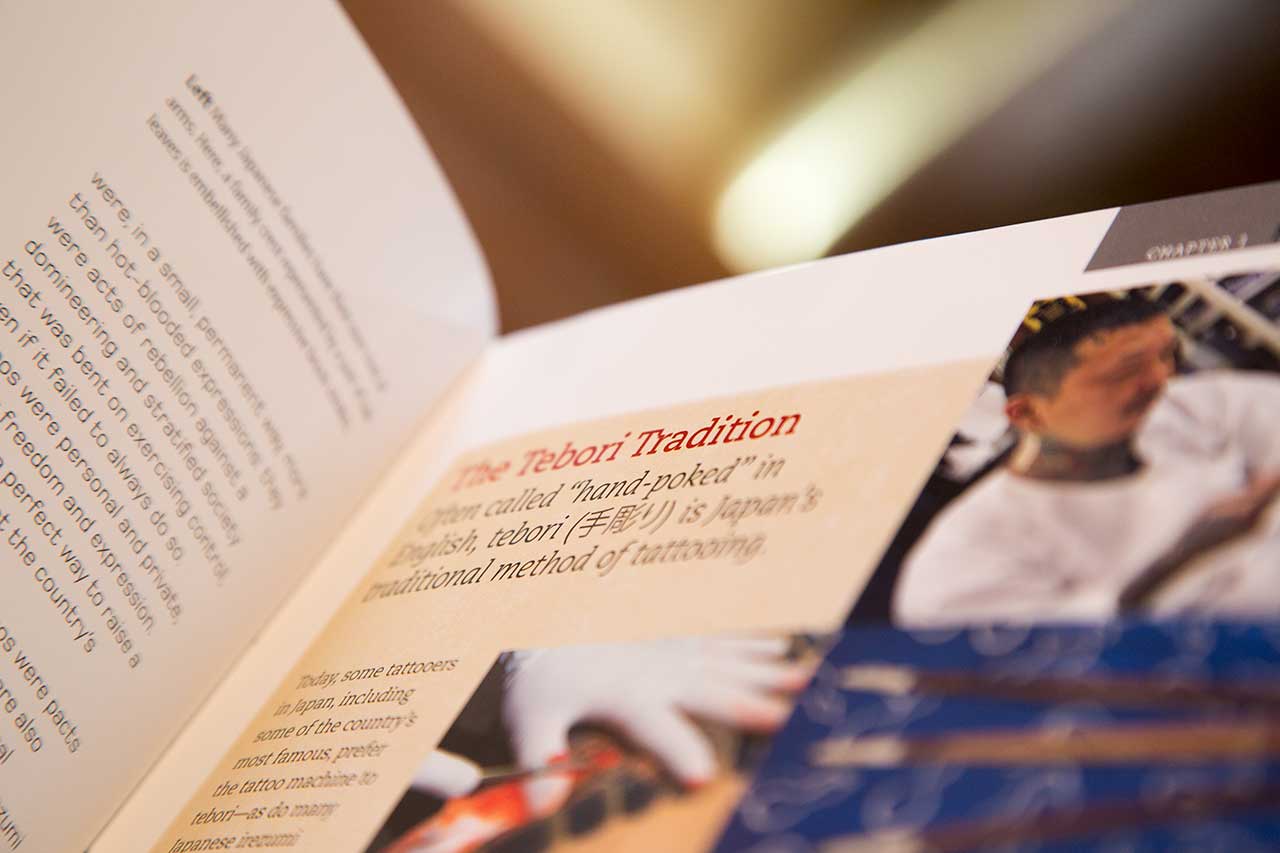
Beyond being an interesting book, Japanese Tattoos has a higher purpose. In recent years, tattoos have come under fire in Japan, and people in power are looking to stamp them out permanently. But there is a way to save them, indirect though it may be.
Horiren, the tattooist interviewed in chapter 5, had an interesting idea for saving irezumi. Ashcraft writes on page 143:
To change the way Japanese people view tattooing, Horiren believes it's necessary to travel abroad to explain the meaning and significance of traditional Japanese tattoos. If irezumi are viewed as an important part of Japanese culture outside of the country, then hopefully people inside the country will reassess their opinion.
Recently, prefectural governments have been using a legal gray area to shut down and arrest tattooists in Japan. So anyone practicing irezumi is putting themselves in danger for their art.
In the past few years, prefectural governments have been using a legal gray area to shut down and arrest tattooists in Japan. So anyone practicing irezumi is putting themselves in danger for their art.
But Horiren's approach could change that. Twenty years ago, otaku things were weird and creepy. Now stuffy prime ministers like Taro Aso and Shinzo Abe have declared them "cool" because anime and manga have brought positive attention to Japan from overseas.
With the Cool Japan initiative in place, the government can and will declare any piece of Japanese culture "cool." Even pickles. No offense to pickles, but I think irezumi are much cooler.
A World Opened
The bottom-line coolness of Japanese Tattoos is the world it opens up. This is imagery rarely seen by anyone, Japanese or foreigner. On page 6, Ashcraft writes:
Because tattoos aren't out in the open in Japan as they are in the West, when you finally do see them, they have enormous impact and power. This is what makes irezumi unique; this is their appeal. Generally speaking, irezumi are personal and private.
The world of Japanese tattoos is not a public one. And if you're interested in this world, Ashcraft and Benny have given you a window with enough information to appreciate what you're shown.
Whether you're into tattoos, Japanese culture, or just plain curious, Japanese Tattoos has plenty of awesome imagery, captivating stories, and enriching knowledge to keep you hooked. The window is open. Take a look. But don't be surprised if you find yourself wondering what intricate ink would look best on your shoulders.
Michael’s Review
I enjoyed this book more than I thought I would. Brian is a web writer, so he knows how keep it punchy without skimping on the educational stuff. If you’re new to Japanese tattoos, this book is everything you need.
